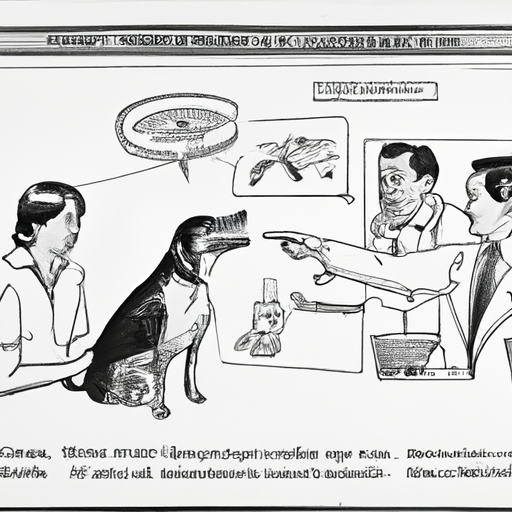As a caregiver, you might have come across the term “Cushing’s disease” in relation to your dog’s health. It’s a condition that can affect dogs of all ages and breeds, but what exactly causes Cushing’s disease in dogs? In this comprehensive guide, we’ll delve into the five key factors that contribute to the onset of this disease.
1. Overproduction of Cortisol
Cushing’s disease, also known as hyperadrenocorticism, primarily arises due to an overproduction of cortisol, a hormone produced by the adrenal glands. This hormone plays a crucial role in managing your dog’s stress response, immune system, and metabolism.
Table 1: Effects of Excessive Cortisol on Dogs
| Effects | Description |
|---|---|
| Increased hunger | Your dog will eat more than usual |
| Increased thirst and urination | Your dog may need to go outside more often |
| Fatigue | Your dog will be lethargic and less active |
| Skin problems | Your dog could develop thin skin, hair loss, and slow wound healing |
| Pot belly | Your dog’s abdomen may enlarge due to fat redistribution |
2. Pituitary or Adrenal Tumors
The second contributing factor to Cushing’s disease in dogs is the presence of benign or malignant tumors in the pituitary or adrenal glands. These glands regulate the production of cortisol in the body, and any abnormal growth can disrupt this balance.
-
Pituitary tumors: These are the most common cause of Cushing’s disease and account for about 85% of all cases. These tumors cause the pituitary gland to overproduce the adrenocorticotropic hormone (ACTH), which in turn stimulates the adrenal glands to produce more cortisol.
-
Adrenal tumors: These are less common but can directly cause the adrenal glands to produce excessive cortisol.
3. Prolonged Use of Corticosteroid Medications
Certain medications can inadvertently cause Cushing’s disease in dogs. Prolonged use of corticosteroid medications, commonly prescribed for allergies, autoimmune disorders, and inflammatory conditions, can lead to an excess of cortisol in your dog’s system, manifesting as iatrogenic Cushing’s disease.
4. Age and Breed Factors
Cushing’s disease predominantly affects middle-aged and older dogs, typically those above six years of age. Certain breeds, including Beagles, Dachshunds, Boxers, Boston Terriers, and Yorkshire Terriers, appear to be more predisposed to developing this condition.
5. Genetic Predisposition
While research is ongoing, some studies suggest that there may be a genetic predisposition towards Cushing’s disease in certain dogs. This predisposition, coupled with environmental factors, could potentially trigger the onset of the disease.
FAQs
Q1: Can Cushing’s disease in dogs be cured?
A1: While there’s no outright cure for Cushing’s disease, it can be effectively managed through medication and lifestyle changes, enabling your dog to live a comfortable and happy life.
Q2: How is Cushing’s disease diagnosed in dogs?
A2: Diagnosis typically involves blood tests, urine tests, and imaging studies. Your vet may also recommend an ACTH stimulation test or a dexamethasone suppression test to confirm the diagnosis.
Q3: Is Cushing’s disease painful for dogs?
A3: Cushing’s disease itself is not painful, but its symptoms, like joint issues or skin infections, can cause discomfort.
Q4: Can diet help manage Cushing’s disease in dogs?
A4: Yes, a balanced, nutritious diet can help manage symptoms and improve your dog’s overall health. Consult with your vet for dietary recommendations.
Q5: Are there any preventative measures for Cushing’s disease?
A5: While there’s no guaranteed way to prevent Cushing’s disease, maintaining a healthy lifestyle and regular vet check-ups can help detect and manage the disease early.
Remember, as a caregiver, your awareness and understanding of your dog’s health condition plays a vital role in their wellbeing. By staying informed, you can ensure your furry friend gets the care they deserve.



